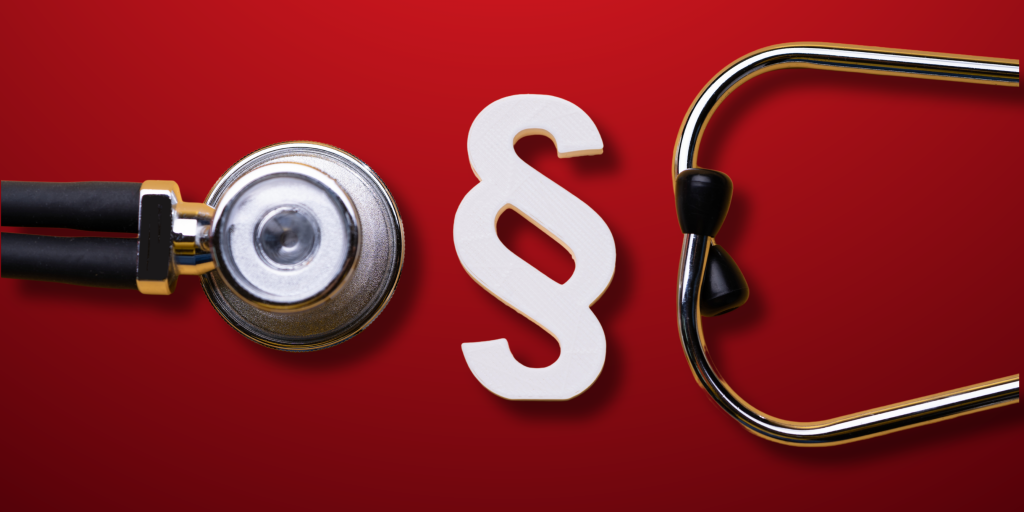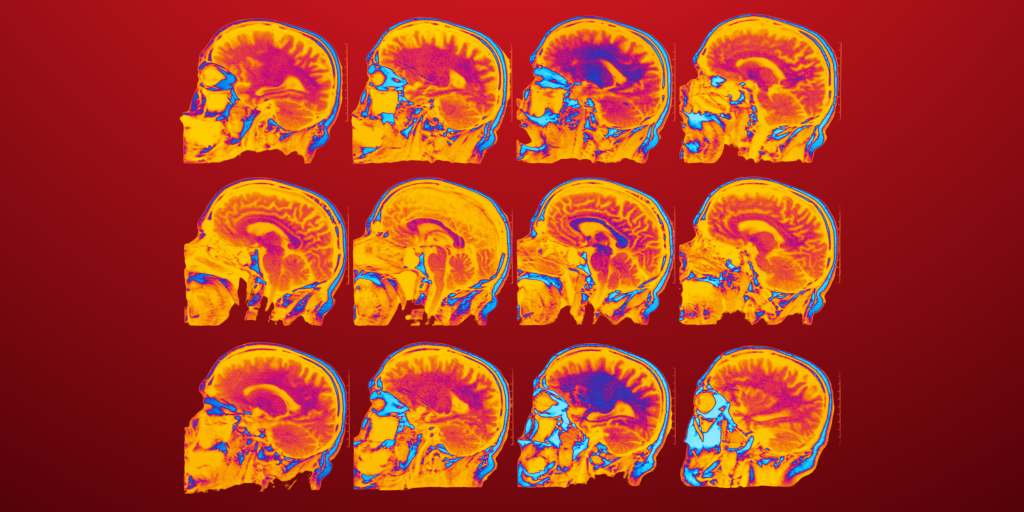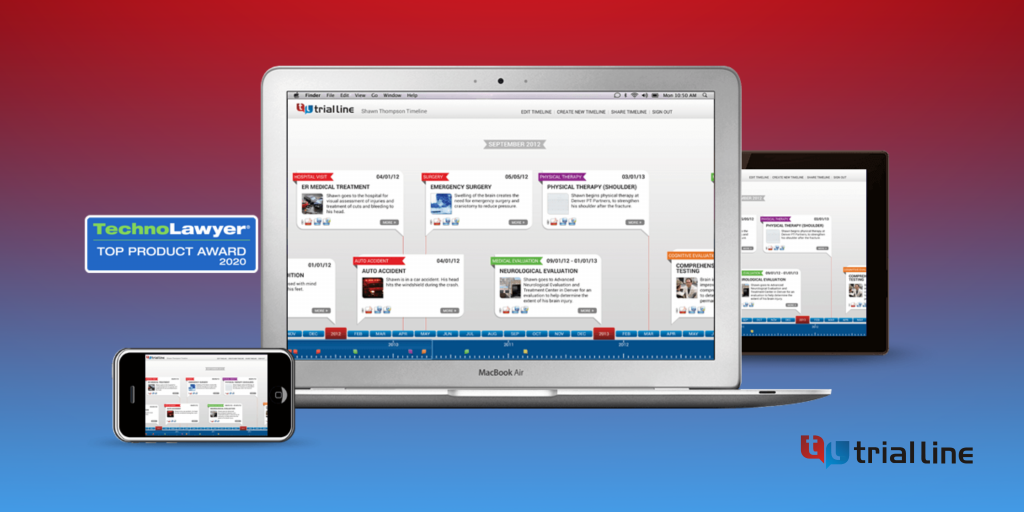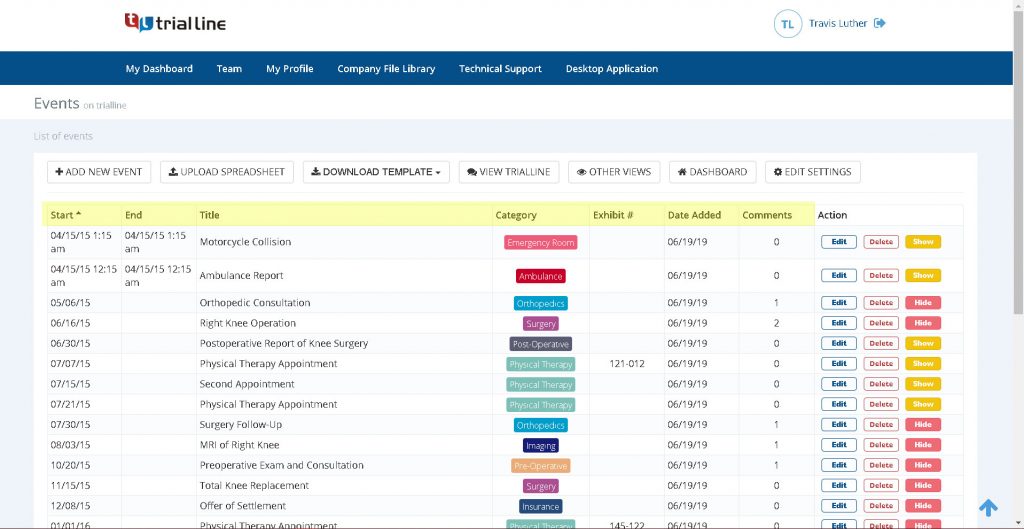Healthcare professionals are bound by their duty to avoid causing harm. When a physician fails to meet the required standard of care, skill, or diligence, leading to injury or harm to the patient, it constitutes actionable malpractice.
Medical chronologies are necessary in malpractice cases. They identify key moments in the patient’s treatment where inadequate care may have contributed to the patient’s deteriorating condition or death. This process involves collecting medical records from various healthcare providers and creating a detailed patient care timeline. These reviews help track instances of negligence and provide critical evidence for the patient’s legal team.
To assist medical record reviewers, tools such as legal timeline software are often used to organize and ensure more accurate documentation. Explore how timeline software can contribute to clearer, more reliable medical chronologies.
Grasping What Medical Chronology Is

A medical chronology is a structured timeline of a patient’s medical history, detailing all significant medical events, treatments, diagnoses, and procedures. This document is often created using medical records from hospitals, clinics, and healthcare providers. Each entry is typically organized by date and includes critical details such as medications prescribed surgeries, and test results.
A well-prepared medical chronology helps legal teams and experts quickly understand the sequence of medical events. This allows them to pinpoint the exact incident where errors or negligence might have occurred. Medical chronologies are tools for building a malpractice case since they lay out the patient’s medical journey in a clear and concise format. Thus, reducing confusion or misinterpretation.
For instance, consider a case where a patient tragically died due to alleged negligence by healthcare providers after receiving treatment at two different facilities. According to medical records, the first facility failed to diagnose a severe internal injury accurately. The patient was then transferred to a second hospital for further care. However, as noted in the medical chart, the second facility also failed to provide the appropriate treatment, and just days after being discharged, the patient passed away.
In such cases, obtaining the medical records from both hospitals becomes necessary. A medical timeline would need to be created based on the patient’s records to understand the full sequence of events. This timeline would clearly outline the diagnostic methods used at the first hospital, the diagnosis given, and the reason and timing of the patient’s transfer to the second facility. The reviewer compiling the chronology would also highlight the second hospital’s negligence and its failure to deliver the necessary treatment.
The Role of Medical Chronologies in Malpractice Cases

In many medical malpractice cases, poor documentation or the failure to record critical details of medical care can be highly detrimental to the hospital or institution involved. Without proper medical records to support an accurate diagnosis or appropriate treatment, there is no evidence to verify that the correct actions were taken. In other words, anything that is not documented has not been done.
Clarifying Key Medical Events
In malpractice litigation, understanding when a specific medical error occurred is often central to the case. Medical record chronologies provide an accurate timeline that highlights key medical events that could suggest negligence or malpractice. Whether the claim involved a delayed diagnosis, surgical error, or improper medical administration, having a chronology makes it easier to identify when the mistake took place.
By offering a visual sequence of events, attorneys can better explain the complexities of a case to a judge or jury. Moreover, this timeline ensures that nothing critical is overlooked, as it includes every significant detail in the patient’s treatment.
Supporting Expert Testimony
Medical experts are frequently called upon to provide testimony in malpractice cases. For these experts, reviewing an organized medical chronology allows them to quickly grasp the entire scope of the patient’s medical history. They can identify deviations from standard medical practice and explain how these deviations may have led to the patient’s harm.
Without a clear medical chronology, experts may spend hours sifting through disorganized medical records, which could lead to missed information or incorrect assumptions. A well-prepared chronology not only saves lives but enhances the accuracy and credibility of testimonies.
Identifying Gaps in Treatment
Medical chronology reports can also reveal gaps in a patient’s treatment. For example, if a patient presented symptoms that were ignored or not addressed for several weeks, this delay could indicate negligence. By documenting every appointment, test, and follow-up, attorneys can demonstrate where healthcare providers have failed to meet the standard of care.
These gaps often form the backbone of malpractice cases. For plaintiffs, identifying missed opportunities for diagnosis or treatment strengthens their claims, while for defendants, showing continuity of care can help build a defense.
Accurate and reliable medical documentation is crucial for both plaintiffs and defendants in medical malpractice cases. The medical record is often the primary piece of evidence that can clearly outline what happened to a patient during their medical care. From a defense perspective, the chart created by the physician or healthcare provider is the key factor that can either support or weaken their case. Without clear, detailed, and thorough documentation, it becomes challenging to build a defense. Proper documentation provides a solid foundation for the healthcare provider under legal scrutiny. Therefore, the patient’s medical chart must present a complete and accurate timeline of all medical events, leaving no gaps or inconsistencies.
How Medical Chronologies Assist in Case Preparation
Malpractice cases are complex, especially for attorneys without medical expertise. However, with the assistance of a medical record reviewer and a well-organized chronology, attorneys can effectively develop legal strategies, including preparing for malpractice cases.
Streamlining the Discovery Process
The discovery phase of a malpractice lawsuit is often lengthy, involving the review of extensive medical records. Medical chronologies are essential tools for condensing this data into a usable format, speeding up the case preparation process. Lawyers no longer need to read through thousands of pages of documents to locate a specific event; the medical chronology provides a comprehensive summary at a glance.
This streamlined process allows legal teams to focus on strategic elements of the case, such as identifying expert witnesses or preparing depositions. The efficiency gained from using medical chronologies is especially crucial in high-stakes litigation, where constraints can impact the overall success of the case.
Facilitating Settlement Negotiations
In many malpractice cases, the parties involved may seek to resolve the dispute through settlement negotiations. A well-organized medical chronology can play a key role in these discussions by providing both sides with a clear view of the patient’s medical history and the alleged malpractice.
For plaintiffs, the chronology helps demonstrate the sequence of events leading to their injury or harm. For defendants, it provides a detailed defense showing adherence to medical standards. Having all the facts laid out in a transparent, organized manner can encourage faster and more equitable settlements, preventing prolonged and costly litigation.
How To Create a Medical Chronology Using A Legal Timeline Software

To maximize the benefits of medical chronologies, it’s crucial to adhere to best practices during their creation. To streamline the process and reduce errors, here’s a guide to developing accurate medical chronologies with the help of legal timeline software.
Gather and organize all medical records
The first step in building a reliable medical chronology is collecting all relevant records. This includes:
- Hospital reports
- Physician notes
- Diagnostic tests
- Prescriptions
- Treatment plans
- Discharge summaries
Once gathered, the records should be organized in chronological order. Legal timeline or medical chronology software has tools that help streamline the organization of documents, enabling users to sort data by date, event, or provider.
Input data into the legal timeline software
After organizing the medical records, the next step is to input key data into the chronology software. These software platforms allow legal professionals or medical reviewers to enter the following details for each medical event:
- Date and time of the event (admissions, tests, procedures)
- Medical procedure performed (surgery, diagnostic test)
- Diagnosis or condition identified.
- Healthcare providers involved in the treatment.
- Medical notes or relevant observations.
As you input this data, the software will automatically generate a chronological timeline. The benefit of timeline software is its ability to handle large volumes of data efficiently, reducing the risk of overlooking critical information.
Highlight key events and incidents of negligence
In legal cases, not all medical events carry equal weight. Attorneys need to focus on critical moments that may suggest negligence or failure to provide appropriate care. Chronology software allows you to highlight significant events that are most relevant to your case. For instance:
- Missed diagnoses or delayed treatments
- Procedures performed incorrectly.
- Medical errors or improper follow-up care.
By flagging these events in the software, attorneys and medical experts can quickly access and reference them during case preparation or court proceedings.
Cross-reference records for accuracy
One of the key advantages of using legal timeline software is the ability to cross-reference multiple medical records easily. In complex cases, patients may have received care from several healthcare providers. This makes it essential to cross-check records from different sources to ensure there are no contradictions or gaps in the timeline.
The software can help identify inconsistencies such as:
- Discrepancies between the medical diagnosis and the treatment provided
- Gaps in treatment timelines
- Conflicting accounts of medical procedures from different providers
By ensuring accuracy through cross-referencing, legal teams can strengthen their case by [resenting a solid, error-free chronology.
Use visual timeline for enhanced clarity
Many timeline software for attorneys offer to create visual timelines that represent medical events graphically. These timelines can be extremely useful in court, as they provide a visual representation of the patient’s medical journey, making it easier for judges, juries, and other non-medical professionals to understand the sequence of events.
For example, a visual timeline may show when a diagnosis was missed or delayed, or when improper treatment was administered. This visual aid helps bring the case to life, reinforcing key arguments in a way that words alone may not achieve.
By using a legal timeline software attorneys can develop a comprehensive understanding of patient care, leading to improved case analysis, client engagement, expert witness coordination, and courtroom evidence presentation.
Building Detailed Medical Chronologies

Medical chronologies are essential tools for organizing complex medical information and clarifying timelines. They play a vital role in supporting plaintiffs and defendants in malpractice litigation by offering a clear and accurate account of a patient’s medical journey. These chronologies help uncover the truth behind medical errors and ensure justice is served.
Creating a precise and detailed medical chronology is crucial in malpractice and personal injury cases. Using legal timeline software like TrialLine, attorneys and medical record reviewers can produce efficient, error-free timelines. Legal teams can greatly strengthen their case by gathering and organizing medical records, highlighting key events, cross-referencing for accuracy, and generating professional reports.
To learn how to create medical chronologies with TrialLine, sign up for our 7-day free trial and schedule a demo with one of our experts.
Ensure error-free medical chronologies with TrialLine.






